What has remained unchanged in the developing story if watchmaking is the rarity of equation of time watches; here are some notables in this exclusive club. Be sure to read our explainer of what equation of time is,
here.
One of the earliest to put an equation of time complication in a wristwatch was Breguet. In 1992, the first Breguet wristwatch with an equation of time complication found its way to retailers — this watch was priced to position it as a very exclusive model, at around US$170,000 (in the year 2000) and fewer than 20 were made per year.
There, matters stood for some time. Interestingly enough, Breguet was preceded by a firm that one would not immediately have associated with such a traditionally haut de gamme complication: Longines. In 1989, for the 100th anniversary of the firm, Longines produced the Ephémérides Solaires wristwatch, a very complicated piece with several astronomical indications which shows the equation of time, but not as a mechanical indication; instead, the EOT is shown on a rotating bezel in the form of a fluctuating line going around the bezel’s circumference, through a scale for each month showing the equation.
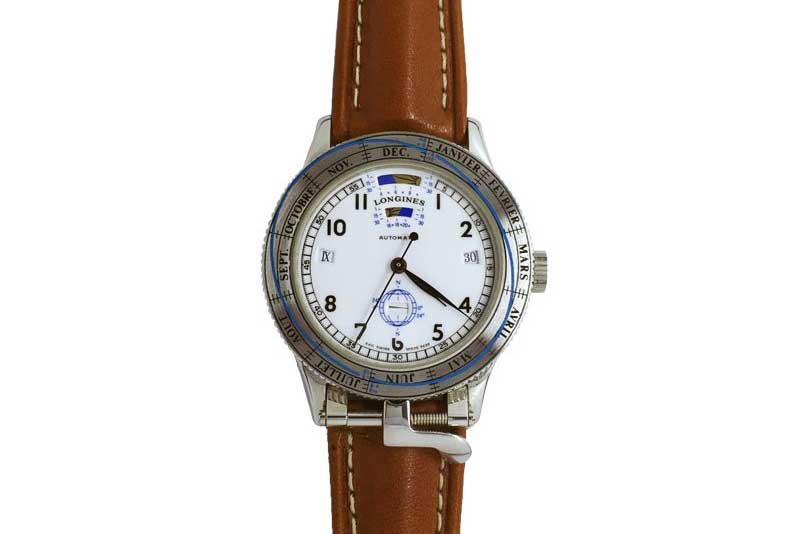
Longines Ephémérides Solaires
One of the most important, as well as the most aesthetically compelling, of all equation of time wristwatches is by Audemars Piguet. The Jules Audemars Equation of Time is perhaps one of the most technically accurate and interesting of all EOT wristwatches. First produced in 2000, its elegant marriage of astronomical complications is virtually unsurpassed.
Not only does the Jules Audemars Equation of Time show the EOT indication, it also shows the correct time for sunrise and sunset — a rarity among rarities — and is a perpetual calendar and a super-accurate moon phase watch as well, with a lunar indication accurate to within one day in approximately 122 years.
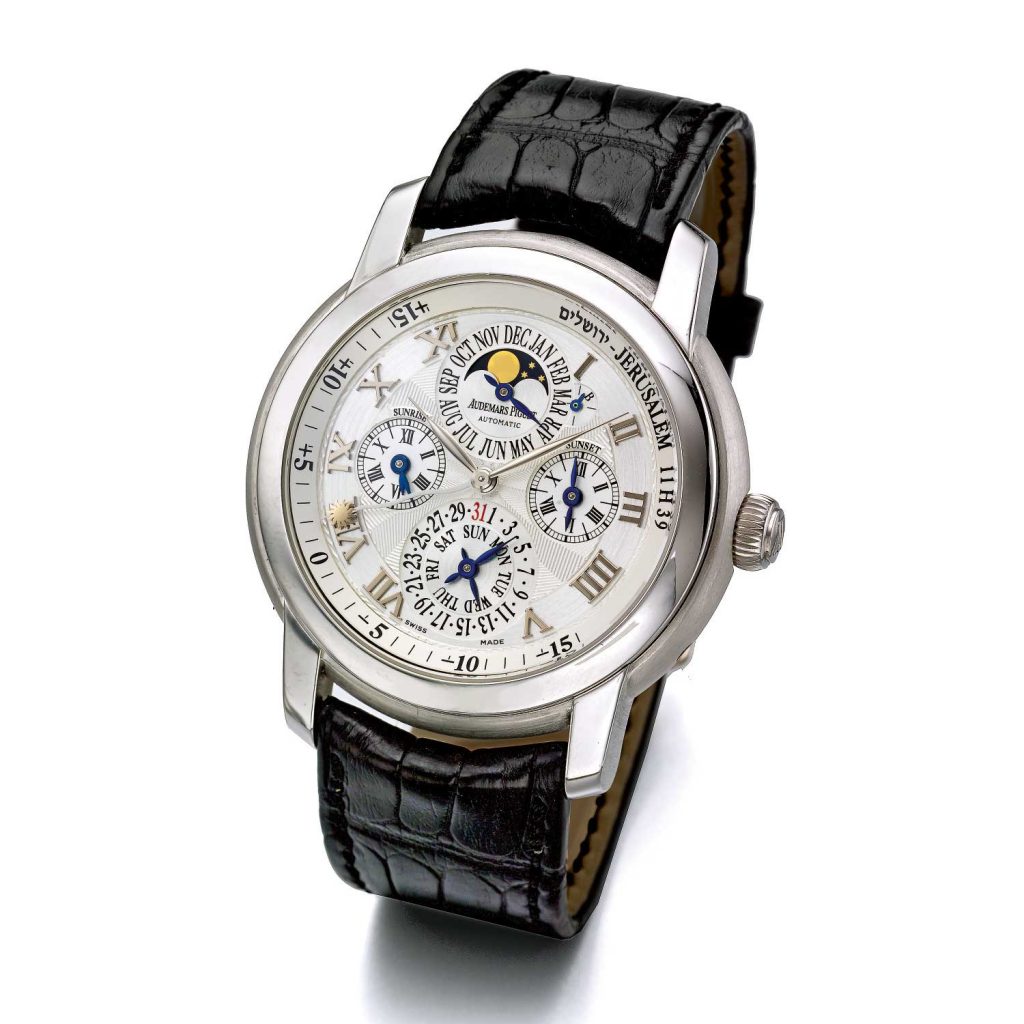
Audemars Piguet Jules Audemars Equation of Time (Image: Sotheby’s)
Sharing the rare distinction of being an equation of time wristwatch that also displays the sunrise and sunset time, is the Martin Braun Boreas. Martin Braun’s EOS wristwatch was, in 2000, one of the first wristwatches to show local sunrise and sunset times and the addition of the equation of time to the sunrise and sunset indications of the EOS is a natural extension of Braun’s fascination — and expertise — with astronomical complications.
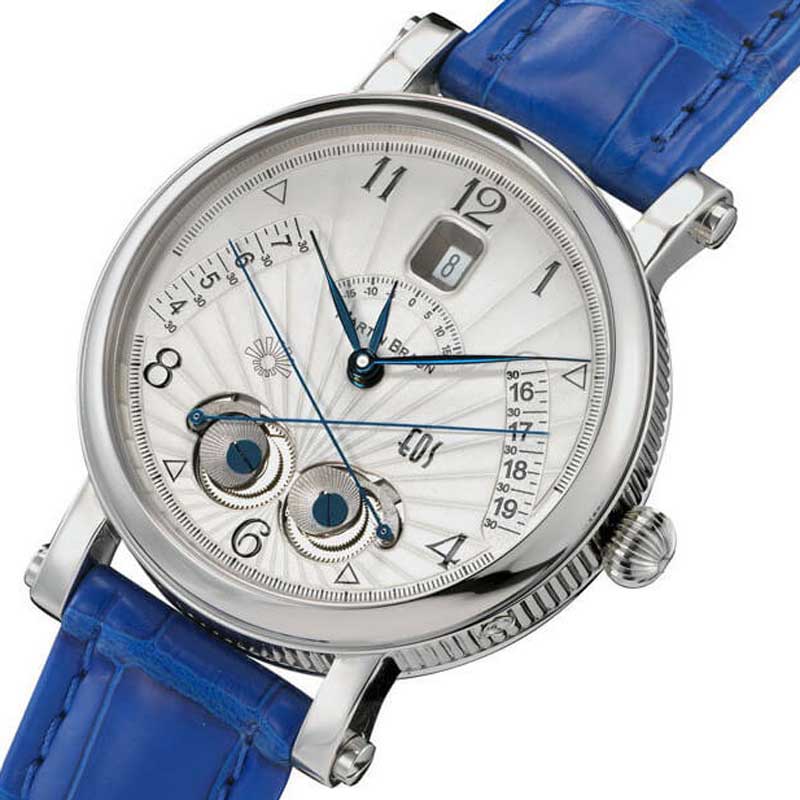
Martin Braun EOS Boreas (Image: FHH)
Among the most eerily beautiful equation of time wristwatches ever made is the Jaquet Droz Equation of Time, made in a limited series of only 28 pieces and which has long since sold out. The equation of time indication generally takes the form of a sector on the dial showing the adjustment to be made in minutes plus or minus from mean time, and so it is on the Jaquet Droz EOT. However, rather than cramp the indication into a small, single sector on the dial, the EOT hand is given a generous sweep of 180 degrees of dial space; and the gold sun tipping the EOT hand swings through a considerable space on the dial, as if to evoke the stately minuet of the planets through the vastness of space itself.
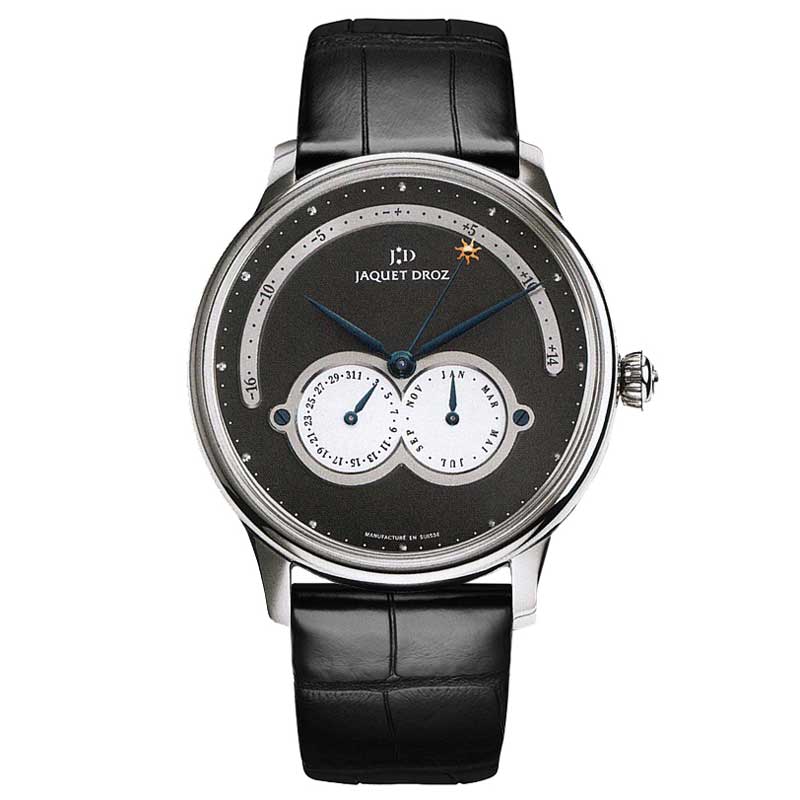
Jaquet Droz La Chaux-de-Fonds Equation of Time
If a direct experience of the rarefied atmosphere of the interplanetary realms is what you’re looking for, then reach — if you can — for the Jaeger-LeCoultre Triptyque. This exhaustively complicated astronomical watch is intended for those who wish that one of the great astronomical cathedral clocks of the late Renaissance could be shrunk down, through some act of unholy and unsanctioned necromancy, to fit on the wrist. The complications encased in its ponderously hypertrophied frame are a veritable catalog of horological astronomy — indications for not only the equation of time, but also sidereal time, a planispheric display of the night sky, the times for sunrise and sunset, a perpetual calendar, the phases and age of the moon… all find their place among the more prosaic indications of the hours and minutes, to say nothing of a view of a tourbillon regulator.
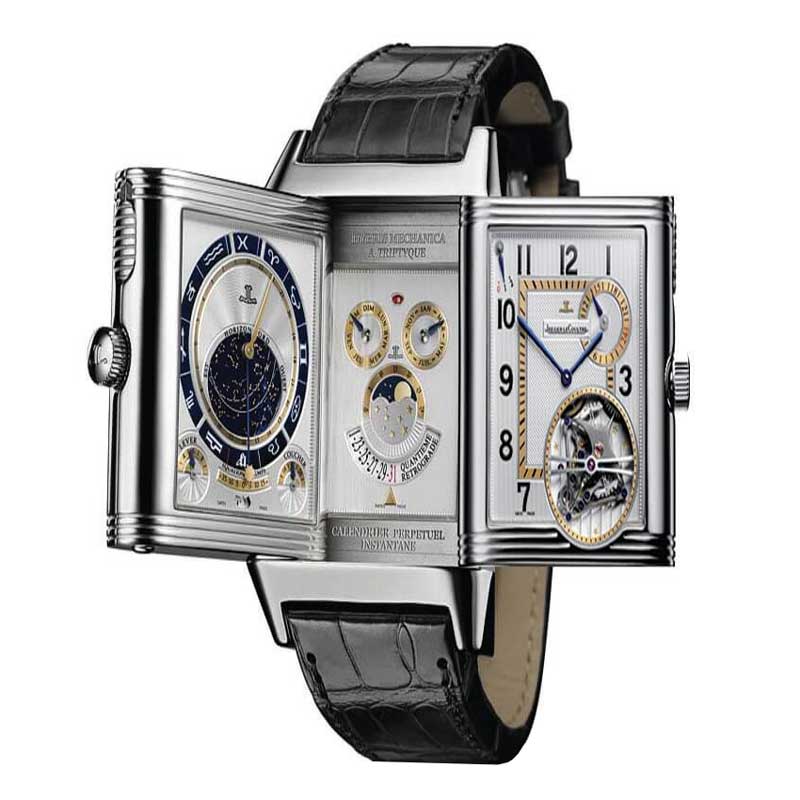
Jaeger-LeCoultre Hybris Mechanica Reverso Triptyque
If horological altitude sickness has not yet afflicted you, then a watch guaranteed to leave you gasping is the Patek Philippe Star Caliber 2000, one of the most incredible horological devices ever constructed — the word ‘watch’ seems woefully inadequate. This mechanical microcosm shows virtually every astronomical function of any importance ever conceived; naturally, it displays the equation of time, but it does so not with a hand sweeping back and forth through a sector on the dial, but with an equation of time marchante — that is, with an additional minute hand that runs ahead or behind the normal minute hand, creeping forwards or backwards through the year as the sun falls behind or overtakes the clock.
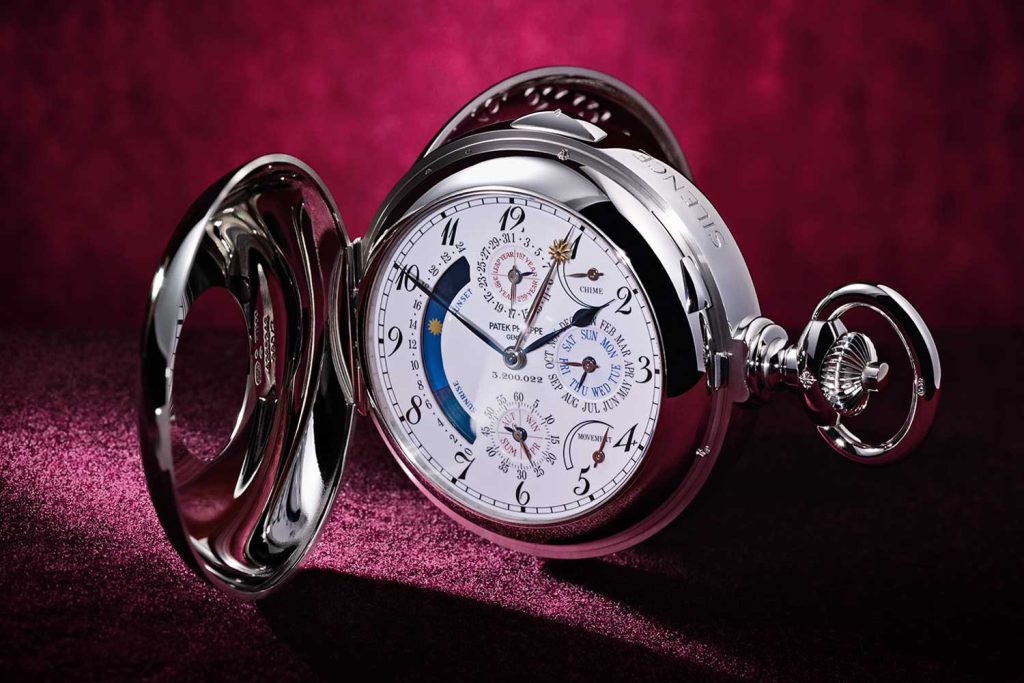
Patek Philippe Star Caliber 2000 (Image: THG)
At a slightly less vertiginous altitude, the Blancpain Le Brassus Equation Marchante likewise combines a perpetual calendar with the EOT Marchante complication — the watch, introduced in 2004, is manufactured in a very limited series, and was the first wristwatch to have an EOT marchante indication. It was joined by the Jaeger-LeCoultre Gyrotourbillon 1 that same year, which combines a marchante EOT hand with an instantaneous, double retrograde perpetual calendar, a unique multi-axis tourbillon, and an eight day power reserve with an up/down indication.
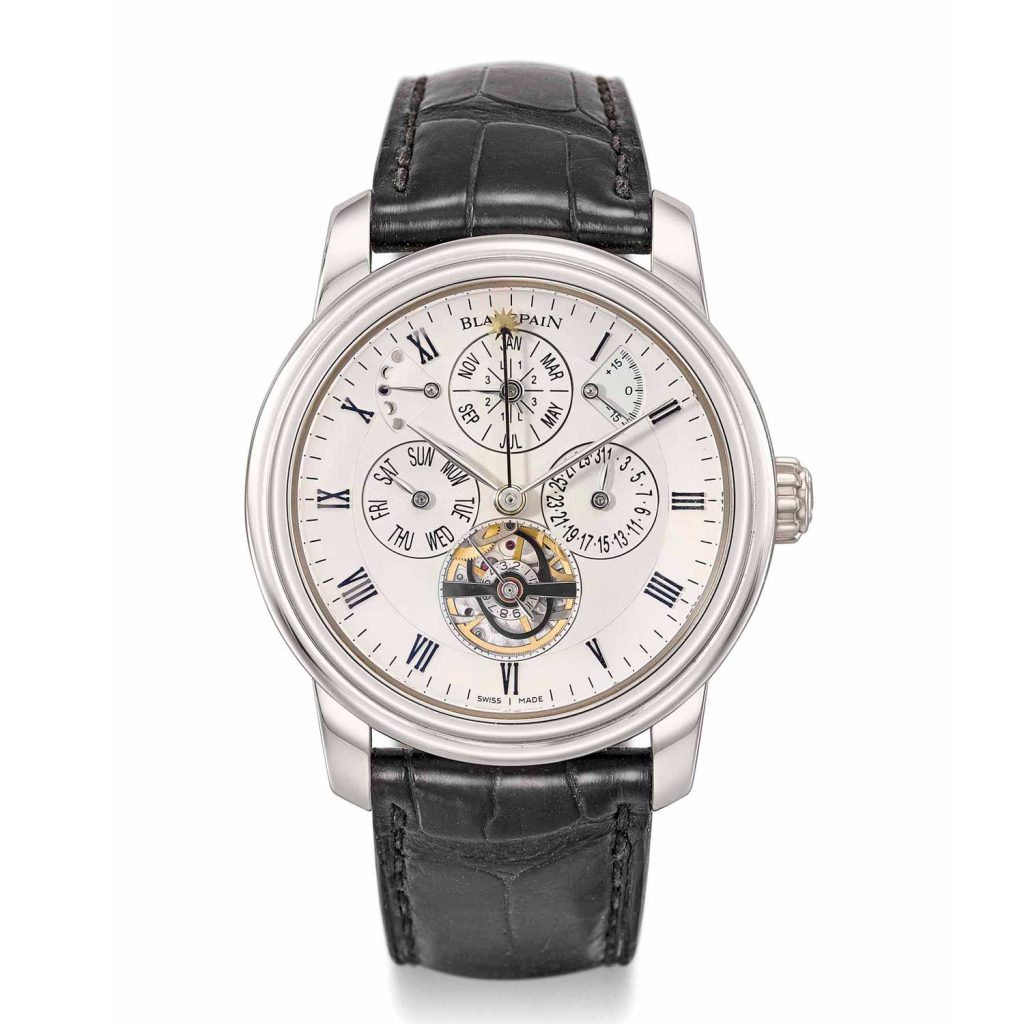
Blancpain Le Brassus Equation Marchante (Image: Christie's)

Jaeger-LeCoultre Gyrotourbillon 1 (Image: Phillips)
Folks who spend most of their waking hours in uniformly-lit, climate controlled white-collar utopia might have less reason to keep tabs on the state of the heavenly bodies above us, at least not as much as those living and working outdoors. That is why the equation of time, though a rare complication firmly steeped in high horology, actually has more relevance in sporty timepieces meant for weathering the great outdoors. Some releases in recent years have answered this call, including the Panerai L’Astronomo Luminor 1950 Tourbillon Moon Phases Equation of Time GMT. It does everything, all included in its foot-long name except for sunrise/sunset indicator which somehow escaped mention. Another clever feature is how in such a skeletonised watch, the numbers on the exposed glass date ring remain invisible until they fall under another piece of polarised glass at the date window. Useful.
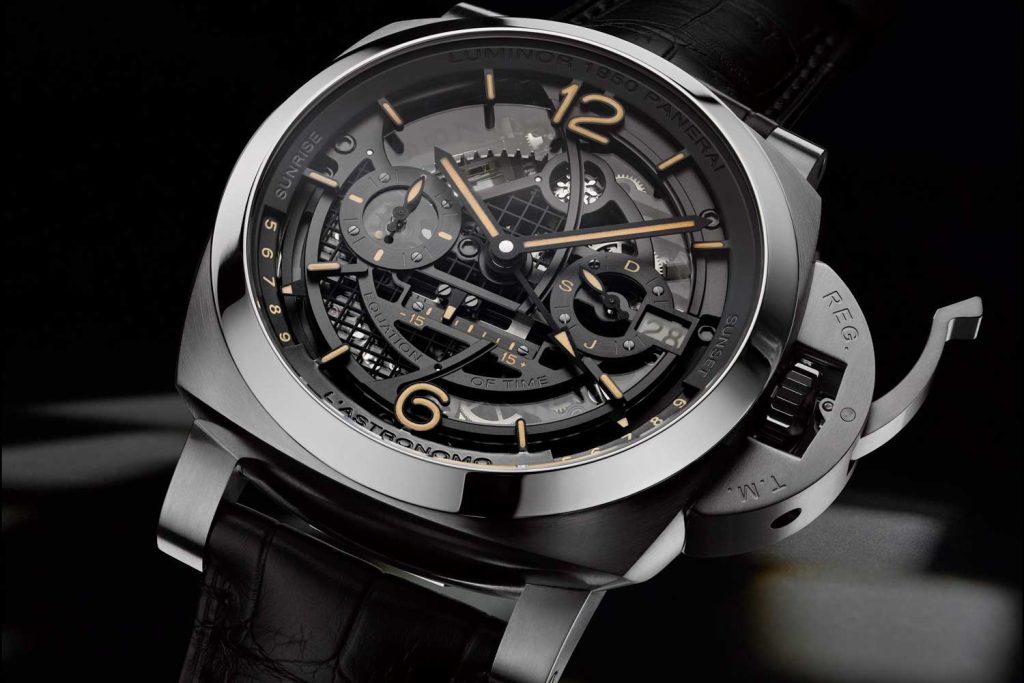
Panerai L’Astronomo Luminor 1950 Tourbillon Moon Phases Equation of Time GMT
Another sporty equation of time watch comes from Breguet, the very brand which brought this arcane complication to the present age. In the Marine Equation Marchante 5887, Breguet has ticked all the boxes with regards to features and performance while nudging its classical design language towards projecting a more casual, nautical-inspired personality. And that jelly-bean cam in the dial window that drives the equation of time is that proverbial cherry on top.
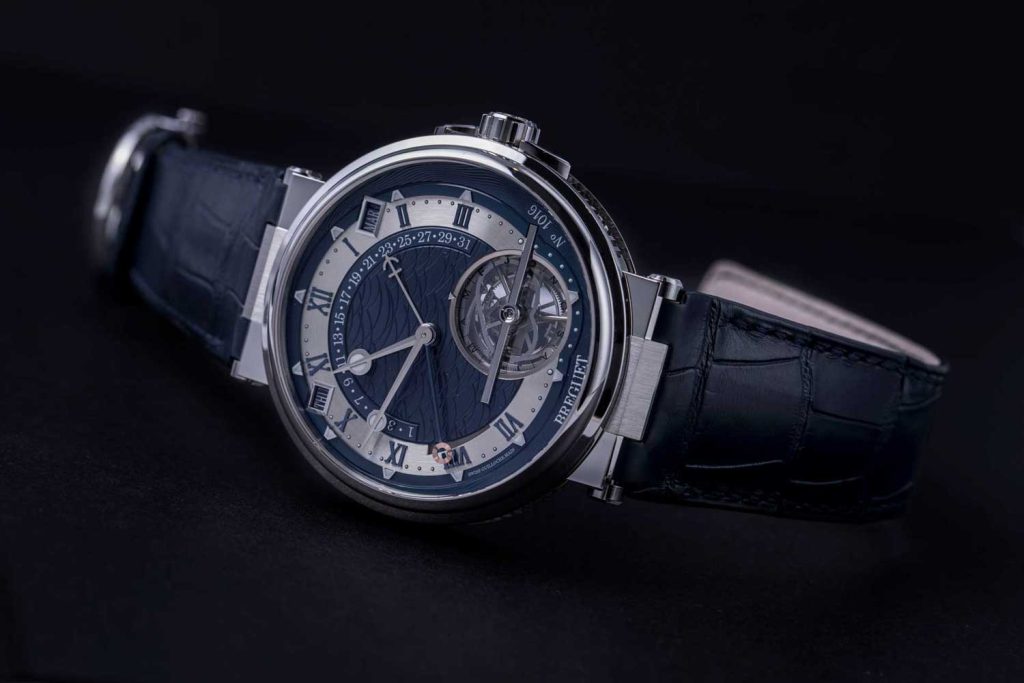
Breguet Marine Equation Marchante 5887
But what’s the fuss with equation of time? To say the least, it’s a complication that reaches across the vastness of space, reminding us that our docile civil time is but a toddling newcomer to the cosmos. It is also a trophy of sorts, won through the efforts of intellectual giants through the ages in unmasking the silent rhythm of our restless universe.




















